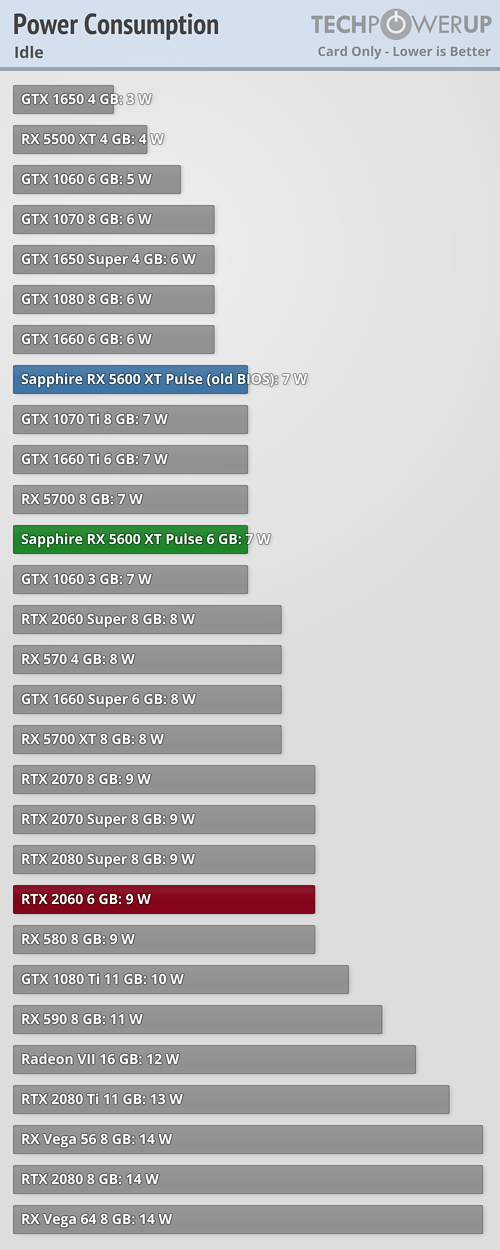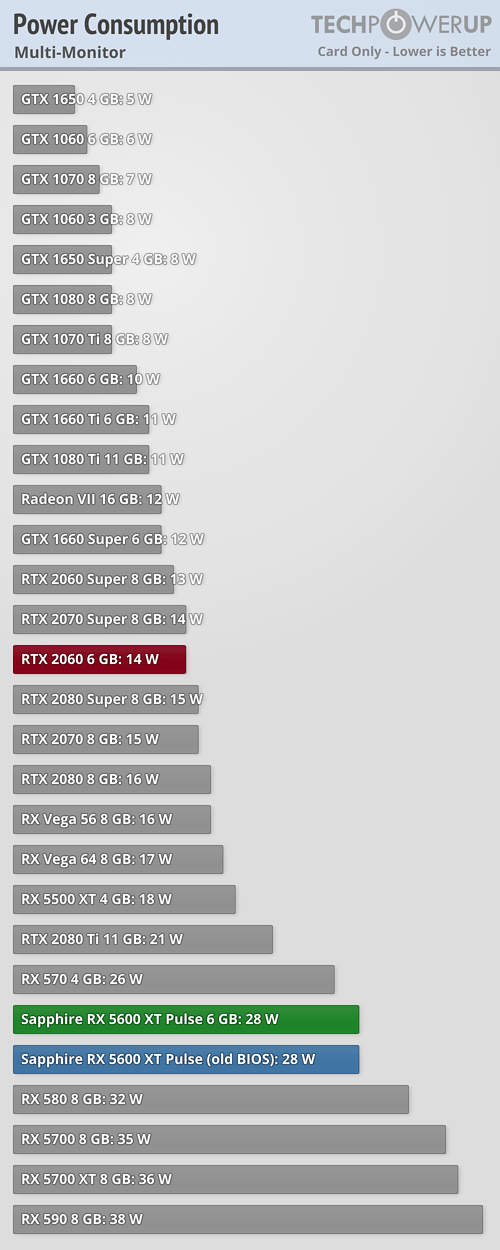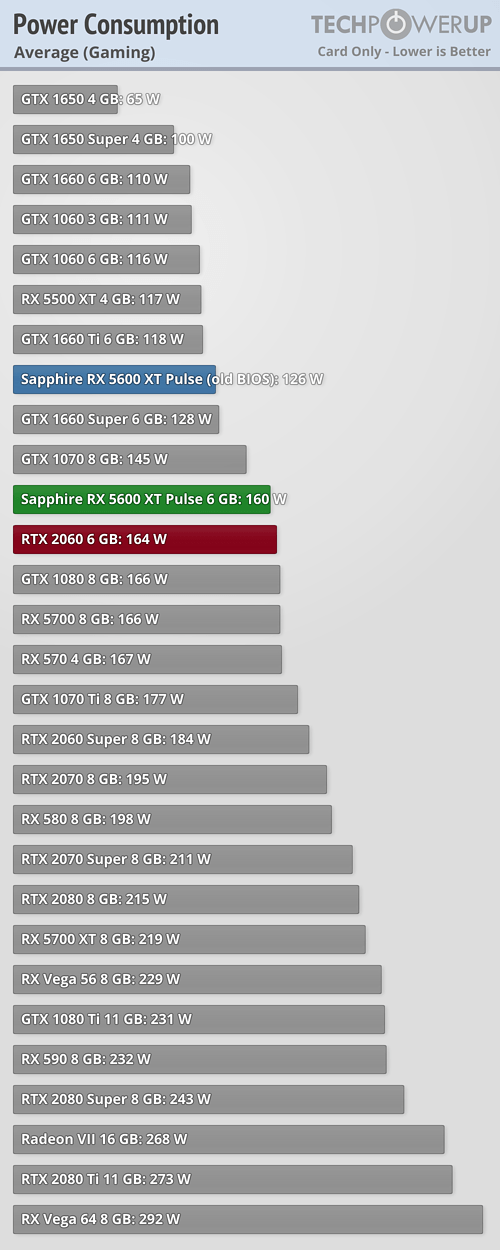 163
163
Sapphire Radeon RX 5600 XT Pulse Review
Temperatures & Fan Noise »Power Consumption
Single-monitor desktop power consumption is very low with only 7 W, which is slightly better than the RTX 2060 and on-par with the GTX 1660 Series. Multi-monitor power consumption is four times as high though, which has been an AMD problem since forever—when multiple monitors are connected, the memory will run at full 3D speed, which drives up power consumption a lot.
Media playback power consumption is more reasonable though, which is important for media PC systems.
As you can see there's huge differences between the old BIOS and the new BIOS. The reasons are not only the increased clocks on the GPU and memory as Sapphire also bumped the GPU voltage from 0.9 V to 1.0 V (to ensure stability at the higher GPU frequency). While the card with the old BIOS was more power efficient than most of NVIDIA's Turing lineup, it now sits right in the middle of the various Turing cards—better than the RTX 2060 and comparable to GTX 1660 Super—pretty impressive for AMD.
With a typical power draw of 150 W and a worst case consumption of 180 W, the RX 5600 XT Pulse is very modest in its power requirements. This ensures upgraders won't have to buy a new power supply.
Minimum recommended PSU: 450 W






Apr 12th, 2025 19:44 EDT
change timezone
Latest GPU Drivers
New Forum Posts
- Is RX 9070 VRAM temperature regular value or hotspot? (346)
- Cache Ratio stuck at 600hz lower than Turbo Cores with Ring Down Bin on (4)
- best ram to buy for my usage and system specs? (14)
- Lossless scaling (18)
- works and stops, random colored screens, Biostar RX560 896SPs (2)
- Steam Deck Owners Clubhouse (509)
- AMD Radeon Pro v540 Research Thread (295)
- Linux and Intel Arc B570/B580 GPU Hardware Transcoding: What am I missing? (1)
- Windows 11 General Discussion (5975)
- 5080 and 5070/Ti cards available at MSRP in the UK (3)
Popular Reviews
- The Last Of Us Part 2 Performance Benchmark Review - 30 GPUs Compared
- Thermaltake TR100 Review
- ASRock Z890 Taichi OCF Review
- TerraMaster F8 SSD Plus Review - Compact and quiet
- Zotac GeForce RTX 5070 Ti Amp Extreme Review
- ASUS GeForce RTX 5080 TUF OC Review
- Sapphire Radeon RX 9070 XT Pulse Review
- Acer Predator GM9000 2 TB Review
- Sapphire Radeon RX 9070 XT Nitro+ Review - Beating NVIDIA
- Upcoming Hardware Launches 2025 (Updated Apr 2025)
Controversial News Posts
- NVIDIA GeForce RTX 5060 Ti 16 GB SKU Likely Launching at $499, According to Supply Chain Leak (181)
- MSI Doesn't Plan Radeon RX 9000 Series GPUs, Skips AMD RDNA 4 Generation Entirely (146)
- Microsoft Introduces Copilot for Gaming (124)
- NVIDIA Sends MSRP Numbers to Partners: GeForce RTX 5060 Ti 8 GB at $379, RTX 5060 Ti 16 GB at $429 (121)
- Nintendo Confirms That Switch 2 Joy-Cons Will Not Utilize Hall Effect Stick Technology (105)
- Over 200,000 Sold Radeon RX 9070 and RX 9070 XT GPUs? AMD Says No Number was Given (100)
- Nintendo Switch 2 Launches June 5 at $449.99 with New Hardware and Games (99)
- NVIDIA PhysX and Flow Made Fully Open-Source (77)